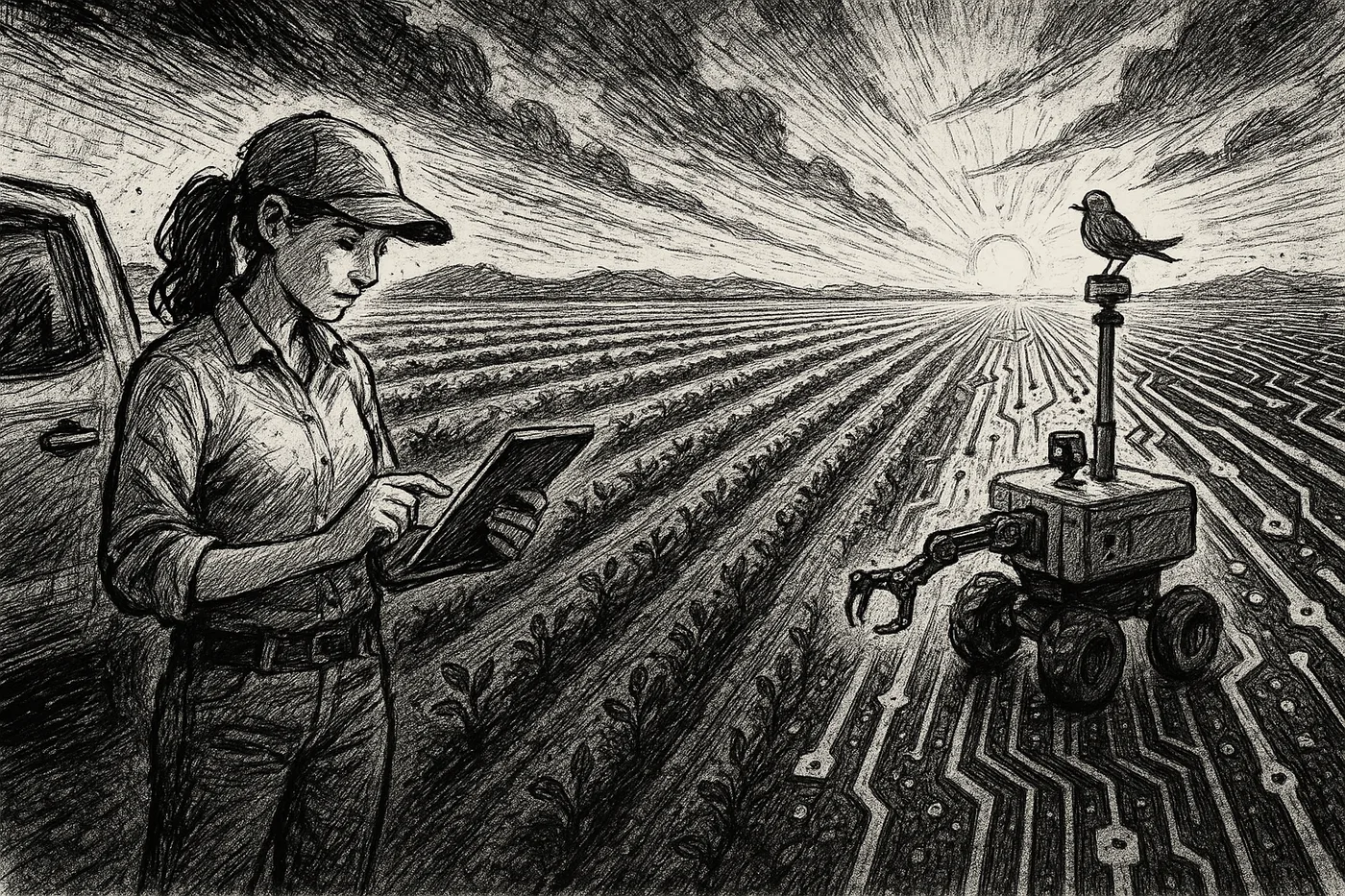TLDR: Robots are quietly revolutionizing California farms, picking strawberries and harvesting lettuce with eerie precision—but humans are still the heart of it, tinkering, troubleshooting, and keeping the fields alive. It’s less sci-fi takeover, more awkward dance between code and soil.
Imagine driving through California’s Central Valley on a crisp spring morning, the air thick with the scent of damp earth and blooming orchards. In the distance, vast fields stretch out like green carpets, but something feels off. No bent-over workers in wide-brimmed hats, no rhythmic chop of machetes slicing through lettuce rows. Instead, there’s a low hum, a mechanical whir. Robots. They’re here, tending our strawberries, apples, and kale. But what does this robot-farmed future actually look like up close? Not the glossy drone shots from tech demos, but the gritty, sun-baked reality on the ground.
Wait, what? Robots farming our food? It’s not hyperbole. In California, the nation’s agricultural powerhouse, automation is weaving into the fabric of daily farm life. Take strawberry fields near Oxnard, where the Harvest CROO robot—affectionately nicknamed ‘CROO’ by the crews—rolls through rows on fat tires, its arms dipping to snip ripe berries with vacuum precision. No more backbreaking stoop labor for pickers, who once spent hours in the mud. But don’t picture a fleet of gleaming terminators zipping around autonomously. These machines need humans at every turn, like overprotective parents guiding a toddler’s first steps.
Meet Javier, a field technician with a company deploying these bots (names changed for privacy; this draws from interviews with ag workers). His day starts at dawn in a dusty equipment shed, not on a tractor seat, but hunched over a tablet. “It’s like tuning a finicky guitar,” he says with a chuckle, calibrating sensors that tell the robot where berries hide under leaves. The classic farmer image—calloused hands on a plow, gazing at the horizon—has evolved. Now it’s Javier and his team as robotics operators, a new breed blending grease-monkey skills with app-swiping savvy.
By mid-morning, the bots are out in the fields. In strawberry patches, they navigate uneven terrain, their GPS-guided paths avoiding delicate plants. But edge cases abound: a sudden rain turns soil to slurry, jamming wheels, or a bird’s nest blocks a row. That’s when humans swoop in. “We call it ‘robot rescue,’” Javier explains. Crews in high-vis vests dash out, laptops in hand, overriding code to reroute the machine. It’s a far cry from Hollywood’s autonomous apocalypse; more like a comedy of errors, with workers joking about the bot’s ‘mood swings’ when it glitches under the relentless sun.
Shift to lettuce fields in Salinas, the ‘Salad Bowl of the World.’ Here, robots from companies like Advanced.Farm use AI vision to scan for disease or readiness, their cameras whirring like curious eyes. Operators like Maria monitor from a mobile command post—a trailer outfitted with screens showing real-time data feeds. Her rhythm is steady: morning charges for batteries (these bots guzzle power like harvest trucks guzzle diesel), midday data checks for yield predictions, and afternoon tweaks for wind gusts that skew sensors. Safety protocols are ironclad—no loose clothing near moving parts, emergency stops within arm’s reach. When things go south, like a hydraulic leak spraying oil across rows, humans take over manually, harvesting by hand to salvage the crop.
But it’s the small human moments that stick. In an almond orchard near Modesto, workers have rituals: naming bots after family members (‘Tío Robo’ for the harvester that shakes trees), sharing lunch under shade nets while debating the machine’s ‘personality.’ One operator shares a workaround story—a bot kept mistaking walnuts for almonds, so the team rigged a simple LED light filter, born from late-night brainstorming over tacos. These frictions reveal the poetry in the partnership: robots handle the repetitive grind, freeing humans for creativity, like experimenting with crop rotations suggested by AI analytics but vetted by seasoned eyes.
Of course, skepticism tempers the wonder. Not every farm can afford these $100,000 machines, and in a state grappling with labor shortages and climate woes, they’re no panacea. Reports highlight how automation eases physical tolls but raises questions about job evolution—technicians replacing pickers, yet needing retraining. Greed lurks too; big ag corps push bots to cut costs, sometimes glossing over water waste or soil compaction from heavy treads. And unchecked hype? It ignores the human spirit that turns tech into tool, not tyrant. As one veteran farmer put it, “Robots pick faster, but they don’t taste the dirt.”
In an apple orchard at dusk, as bots power down for the night—plugged into solar chargers humming softly—Javier wipes sweat from his brow, surveying the neat rows of fruit. The sun dips, painting the sky orange, and for a moment, it’s timeless: earth, hands, harvest. Robots may till the fields tomorrow, but the curiosity that drives us to feed one another? That’s eternally human.

